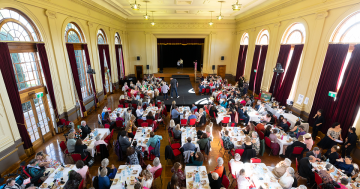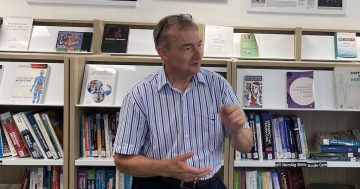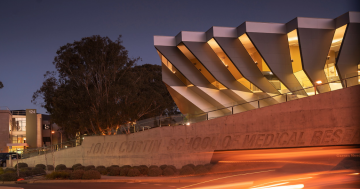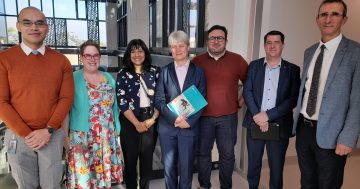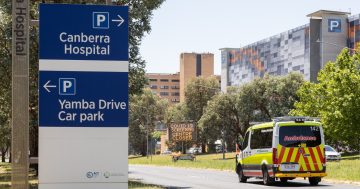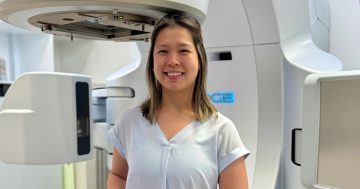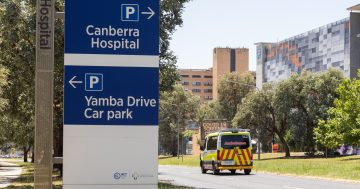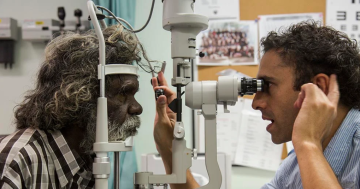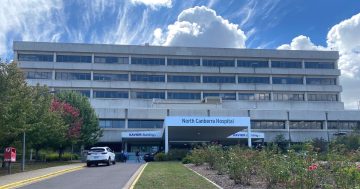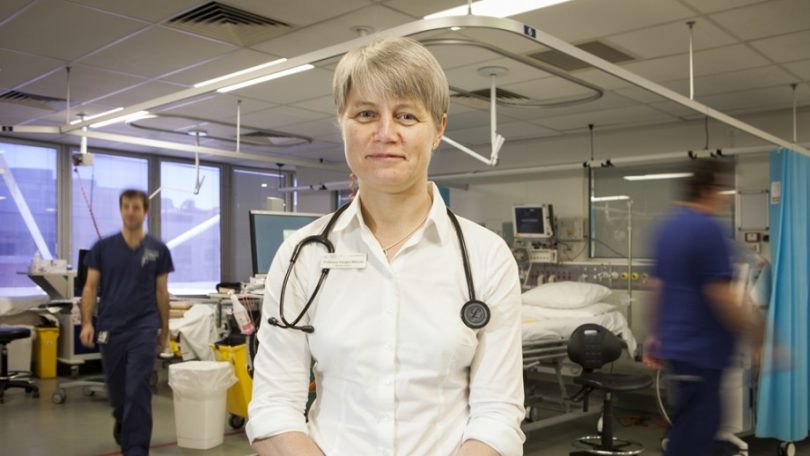
Professor Imogen Mitchell
To mark National Science Week which runs until August 20, the Australian National University’s Medical School has put together an ‘Inspiring Doctors’ album which celebrates the heroes of medicine working right here in the nation’s capital.
From working with refugees who have escaped persecution to connecting with patients to help prevent heart attacks, the stories told give a rare insight into the people who are not only saving lives but also passing on their wisdom to others.
“These inspiring doctors save lives between lectures and work to improve the nation’s health – every week of the year,” writes the ANU Medical School.
Below are photos and quotes from the 10 featured ‘Inspiring Doctors’ who are all part of the ANU Medical School. The photos have all been taken by ANU photographer Stuart Hay.
Professor Imogen Mitchell is an Intensive Care Specialist at the Canberra Hospital and Dean of the ANU Medical School. Professor Mitchell, who is pictured above, writes:
“There are patients and families who are memorable to me. There was one patient who was unconscious and extremely sick, and his wife was six months’ pregnant. I had just come back from maternity leave myself and all I could think was: this child could be born without a dad.
“His wife later commented on the fact that I showed some emotion about it. She said it meant a lot to her that I cared. I do care. Not just about the treatment, but about the person.
“This was eight years ago now, and just the other day that patient emailed me. We still keep in touch.”
Dr Alexandra Currie is an Anatomical Pathologist at the Canberra Hospital and Clinical Lecturer at the ANU Medical School.

Dr Alexandra Currie
“Most people think their biopsies go into a big lab and some sort of faceless machine processes them, but this is where your biopsy might come, my desk here in my office.
“My hobby is photography. I’m a very visual person and there’s definitely a visual element to pathology. It’s beautiful looking down a microscope. You’re seeing a whole world that other people don’t have access to. I’ve become attuned to picking out tiny, hidden things, so I notice small details in real life too, things that only a pathologist might notice.”
Dr Alexandra Webb is Senior Lecturer in anatomy at ANU, and leads the development and implementation of technology-enhanced learning at the ANU Medical School.
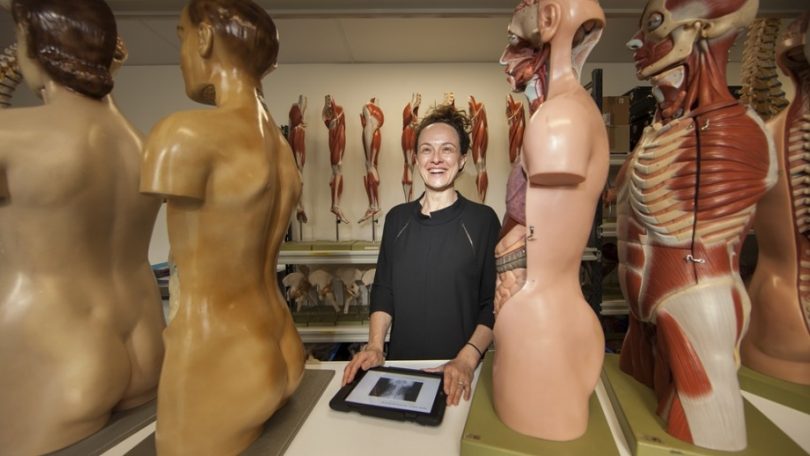
Dr Alexandra Webb
“I’ve developed a range of online resources that are integrated with these traditional methods of studying anatomy so students can interact with medical imaging as if in a clinical context. Technology creates these opportunities for improving our teaching.
“I’m an anatomist, not a medical doctor. The truth is I faint at the sight of blood! I don’t mind cadavers though. Cadavers are an important part of the study of anatomy, and so are these models. They allow a tactile exploration.”
Dr Paul Pavli is a Senior Staff Specialist in gastroenterology at the Canberra Hospital and Professor at the ANU Medical School. Dr Claire O’Brien is an NHMRC Peter Doherty Biomedical Research Fellow at the ANU Medical School.

Dr Paul Pavli and Dr Claire O’Brien
Claire: “A family member was diagnosed with Crohn’s disease so I wanted to do my PhD on it. Paul was my supervisor and now we’re researching the cause of the disease together. We know it has something to do with the immune system and bacteria. My background is in bacteria and Paul’s background is in the immune system.”
Paul: “So we’re the perfect team! I have been looking after patients with Crohn’s disease for a very long time now, some of them for 25 to 30 years. The improvement in the treatment during that time has been very gratifying. I guess I am getting closer to retirement age, but the research is just getting better and better. I feel like we’re almost there.”
Professor Zsuzsoka Kecskes is a Staff Specialist in neonatology at the Canberra Hospital, and Deputy Dean and Associate Dean (Teaching and Learning) of the ANU Medical School.

Professor Zsuzsoka Kecskes
“These babies could be the Nobel Prize-winners of the future, they could be the girl who fixes your plumbing, they could be the boy who teaches your great grandchildren. I hold this potential in my hands and I need to protect that at all costs.
“When they come back for a follow-up at three years old, or you see them at the shops, that’s what makes all the hours, the nights, the worries worthwhile. The kids can have scars on the back of their hands and they’ve been through hell, but now they’re smiling, they give you a hug, and their parents are beaming. I wouldn’t trade that for anything.”
Associate Professor Christine Phillips teaches Social Foundations of Medicine at the ANU Medical School and works as a general practitioner at Companion House Medical Service with adults and children who have sought safety in Australia from persecution, torture and war-related trauma.

Associate Professor Christine Phillips
“When I first started working at Companion House, I was treating refugees from the former Yugoslavia. Now we have Syrians arriving. Our patients are always changing, so we’re always learning.
“Anyone who has worked in difficult areas of medicine knows you need to have a deep respect for the people you’re working with, and their survivorship. It’s inspirational. You have to have a good sense of humour; you have to have a realistic appreciation of what you can achieve; and you have to have something else in your life so you don’t become obsessed and paralysed with the injustice. For me, that something else is teaching.”
Dr Ashwin Swaminathan is Director of General Medicine at Canberra Hospital, a Senior Staff Specialist in infectious diseases, and Senior Lecturer at the ANU Medical School.

Doctor Ashwin Swaminathan
“Ward rounds are conducted every single day on every ward in the hospital. They’re an essential tool for patient management but they consume a lot of time and human resources. We have been doing them in a similar way for over a hundred years, seeing patients sequentially from rooms 1 to 20, even if the patient in room 5 or room 12 needs to see you first.
“I question whether ward rounds developed in the early 20th Century meet the needs of modern hospital medicine in the 21st. It’s an example of the many ‘sacred cows’ we have wandering the hospital, traditions we follow without appropriate scrutiny of their value. So I’m focusing on how we can deliver evidenced-based medicine in the most effective way.”
Professor Klaus-Martin Schulte is Chair of Surgery at the ANU Medical School and Visiting Medical Officer in endocrine surgery and acute care services at the Canberra Hospital.

Professor Klaus-Martin Schulte
“As a surgeon I have the ability to turn the patient’s story from diseased to cured, with a single action. That’s what drew me to surgery: achieving, with limited intervention, a definitive outcome.
“In surgery you face a vast variety of unforeseeable situations, but no, I do not get nervous. I go into situations seeing what can be done and doing it. There is no time and space for fear.
“For a medical student to become a surgeon, they must have a complete and exhaustive knowledge of the physiology of the human body, and they must be patient-centred. Surgery is about the patient you are operating on and cannot be about any other ulterior motives.”
Dr Jane Dahlstrom is a Senior Staff Specialist at the Canberra Hospital and Professor of anatomical pathology at the ANU Medical School.

Doctor Jane Dahlstrom
“I was diagnosed with breast cancer in 2003. At the time I was actually the chair of the Breast Cancer Treatment Group for the ACT and South East NSW. Having my own cancer journey as a doctor, while it was incredibly inconvenient, was really helpful in my own personal development. It made me think about the patient perspective more than I used to.
“In pathology we make the diagnosis that determines the prognosis for that patient. People think of us as not being involved in patient care, but we’re core to it. What I say makes a big difference to how the patient might decide to live the rest of their life.”
Dr Walter Abhayaratna is a Senior Staff Specialist, Consultant Cardiologist and Clinical Director of Medicine, Canberra Hospital and Health Services and Professor at the ANU Medical School.
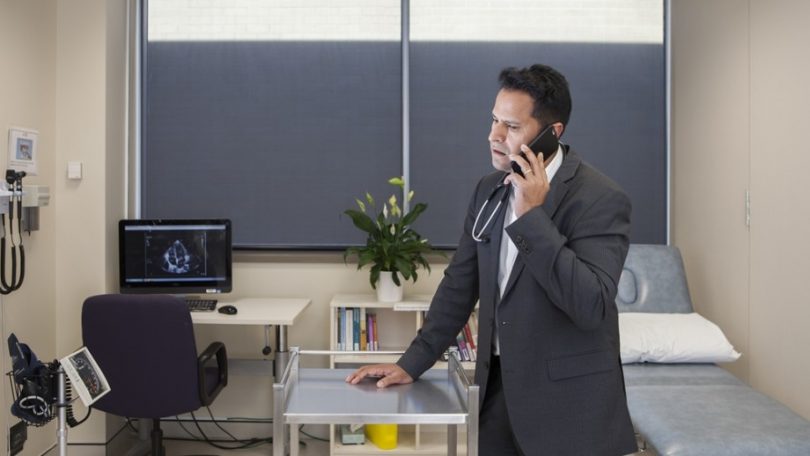
Doctor Walter Abhayaratna
“When you go on a round, treating the heart attack is relatively easy, putting a stent in is relatively easy. You’ve done it thousands of times before. But I don’t want to do it. I’d rather the heart attack never happened in the first place. It’s preventable.
“What I prefer is talking to patients. Connecting with people and supporting them to change their whole mindset—as well as their lifestyle—so they’re not back in the hospital next month. That kind of communication and connection, it’s the art, not the science, of medicine.”












